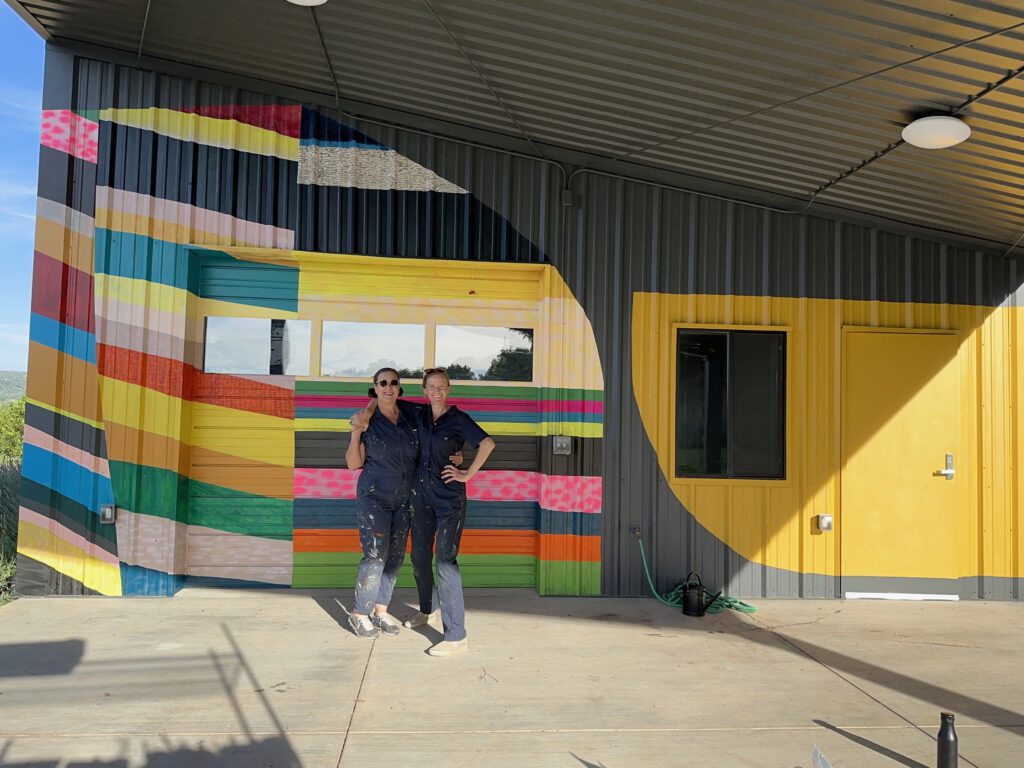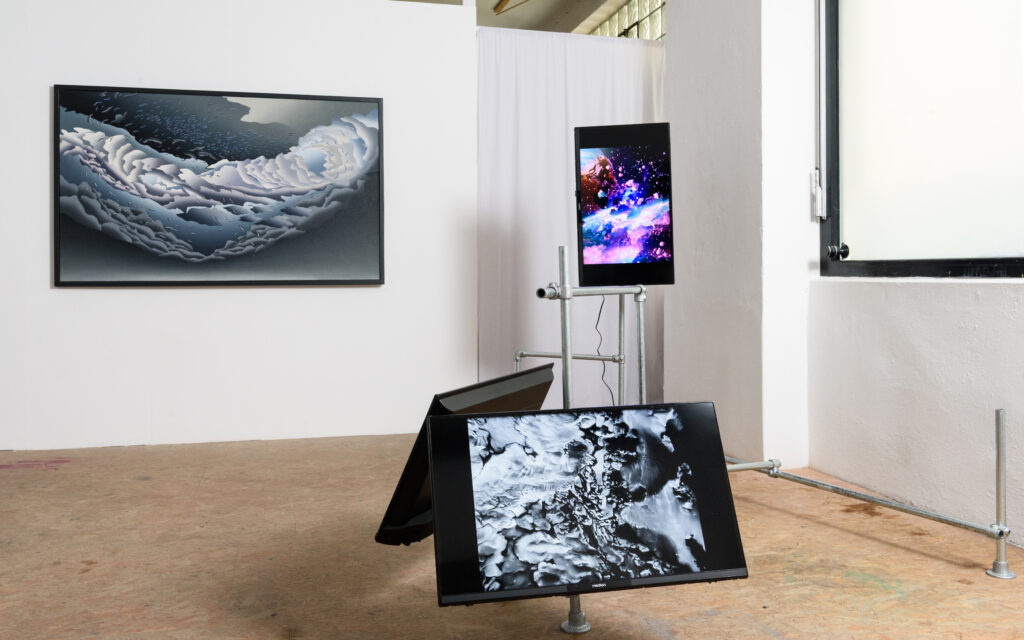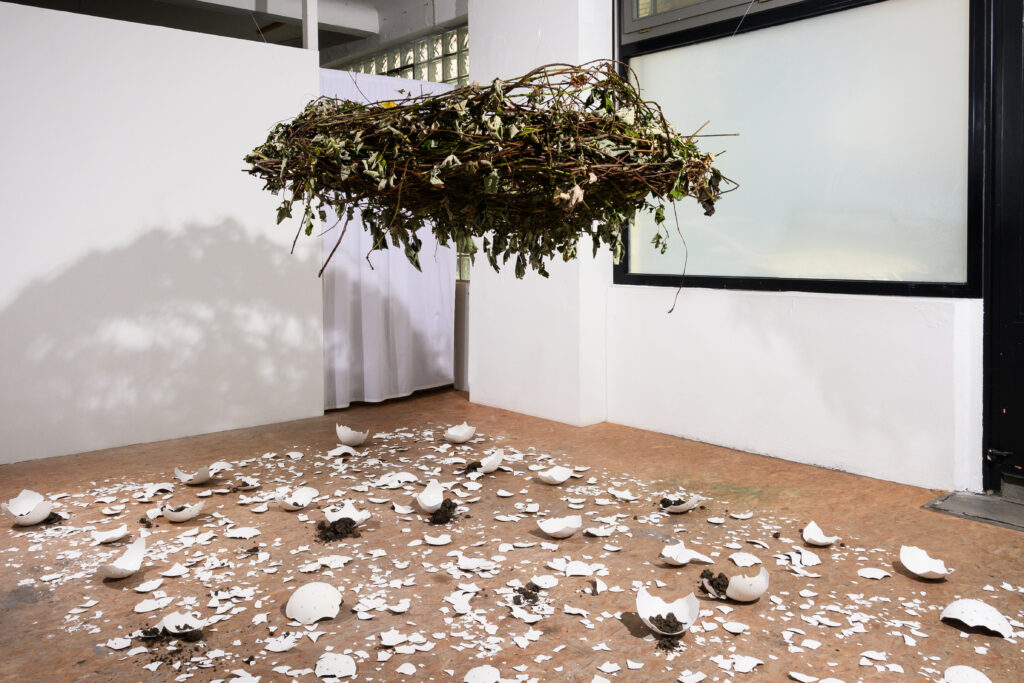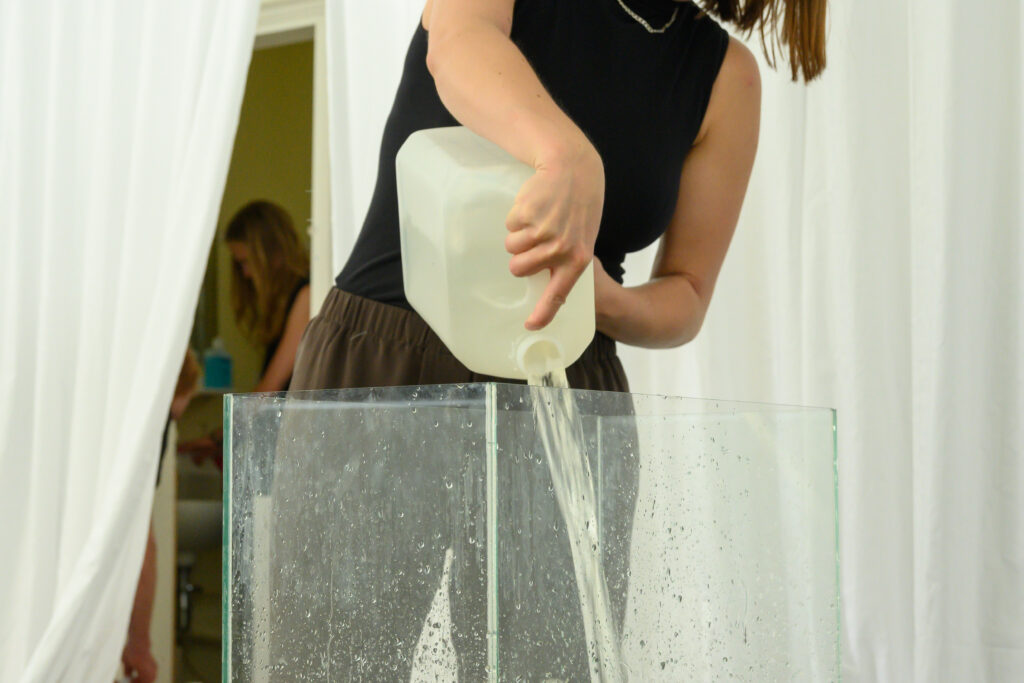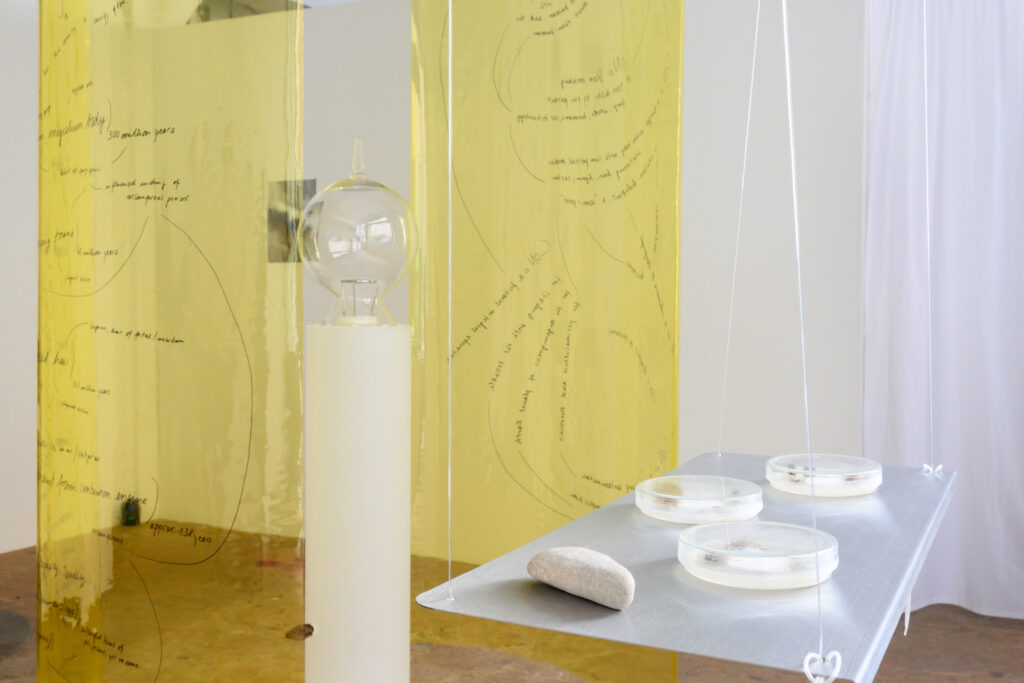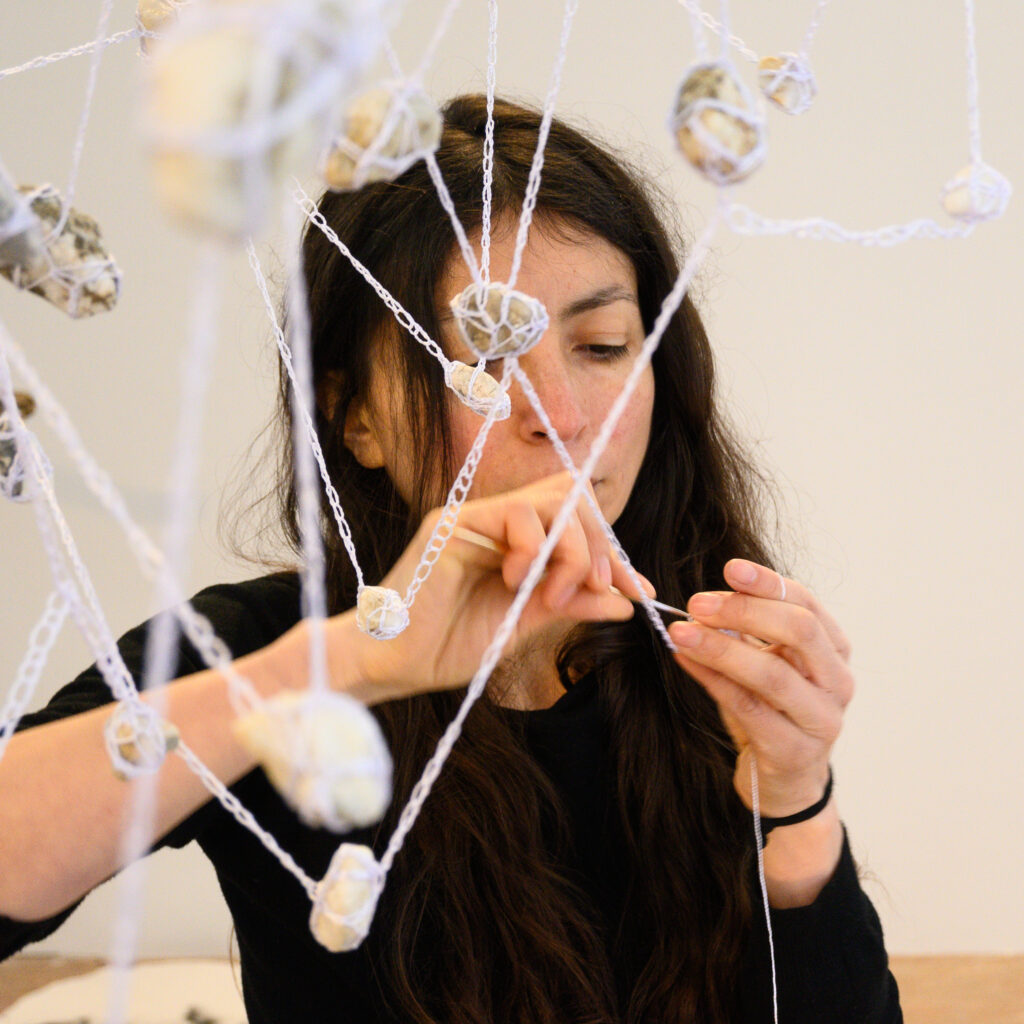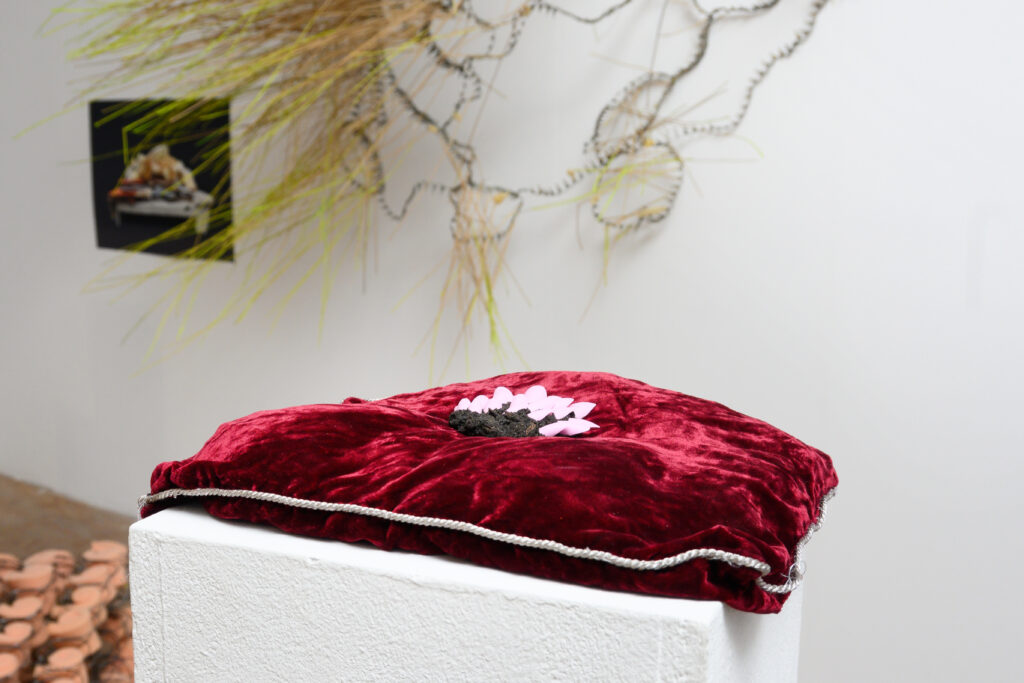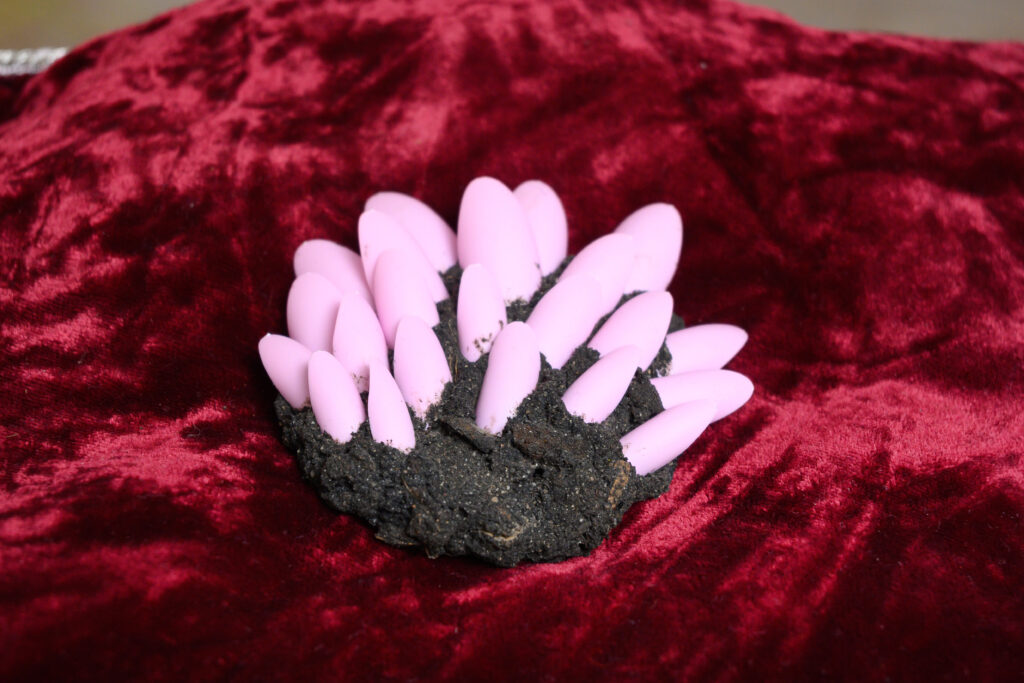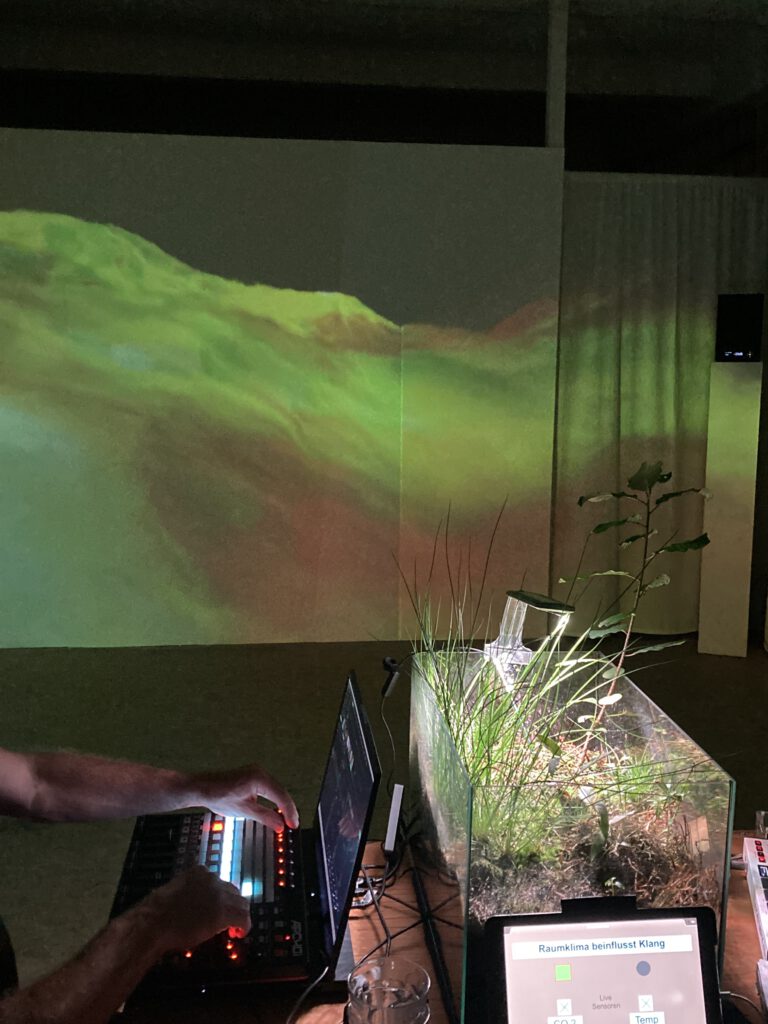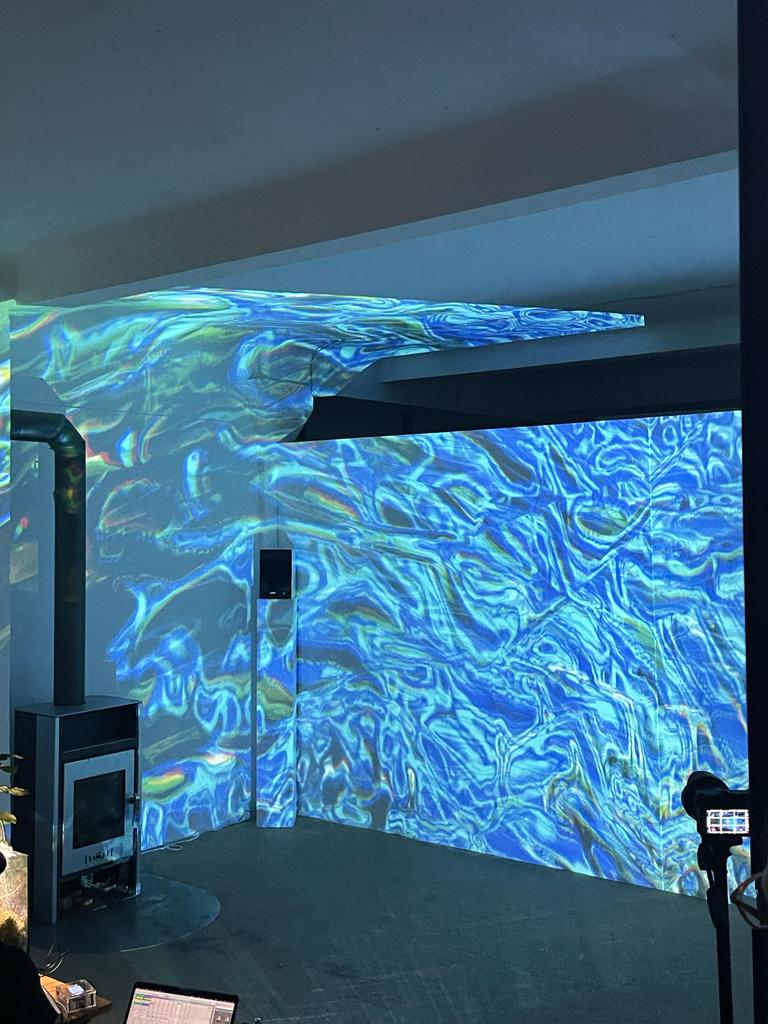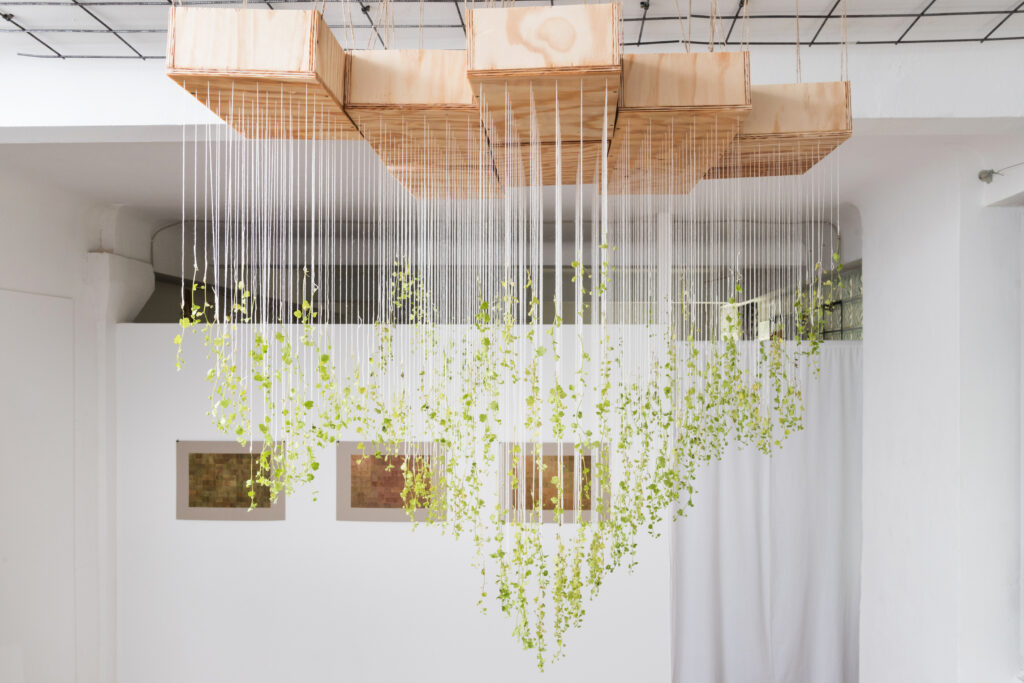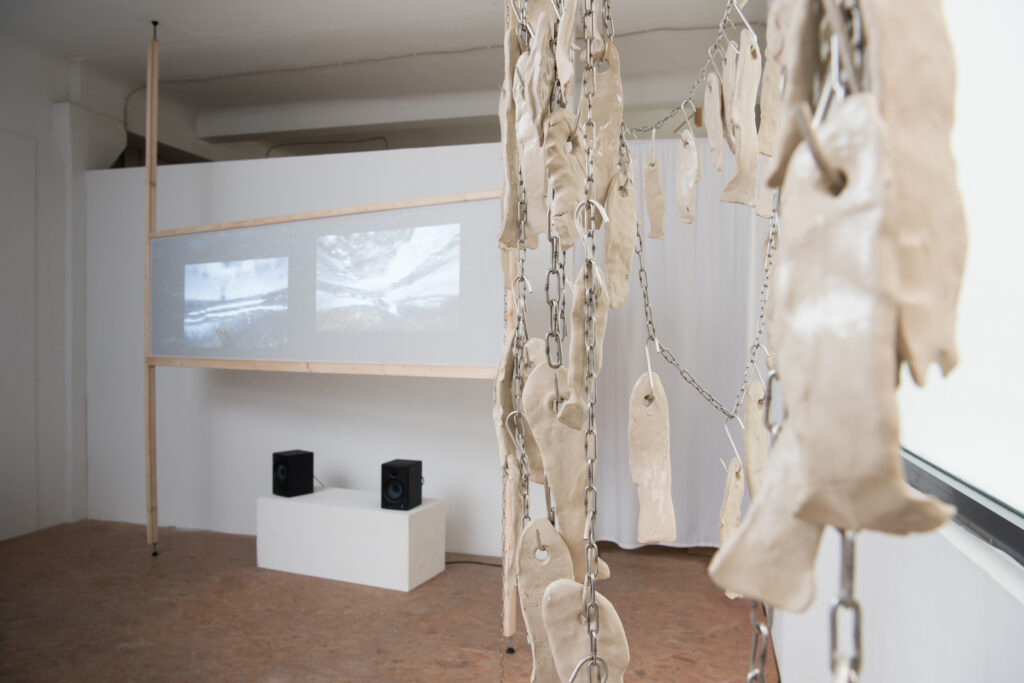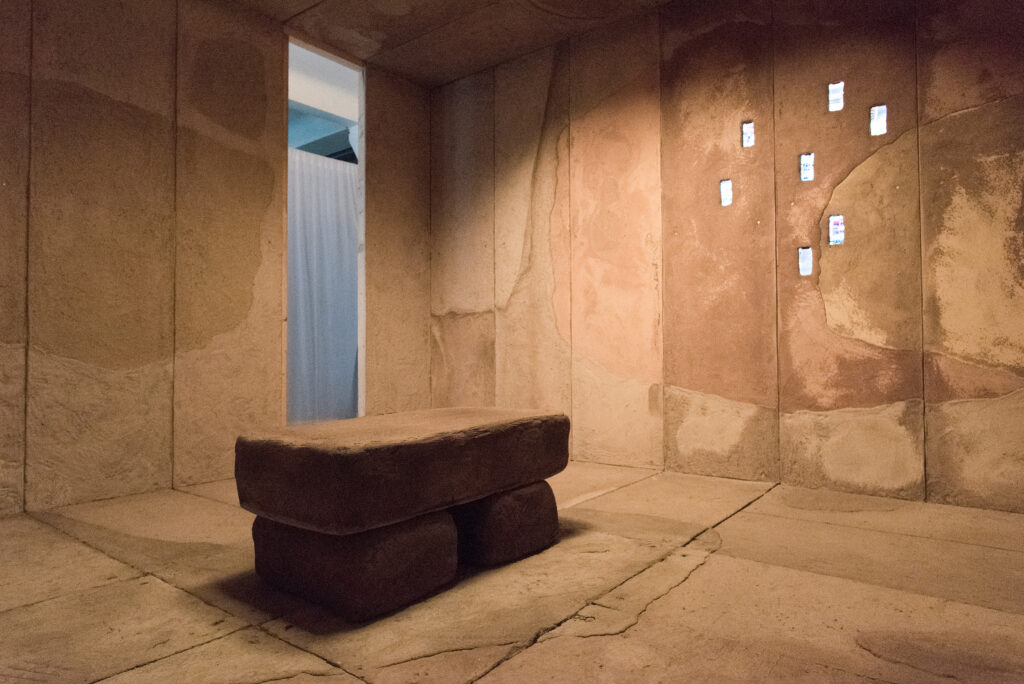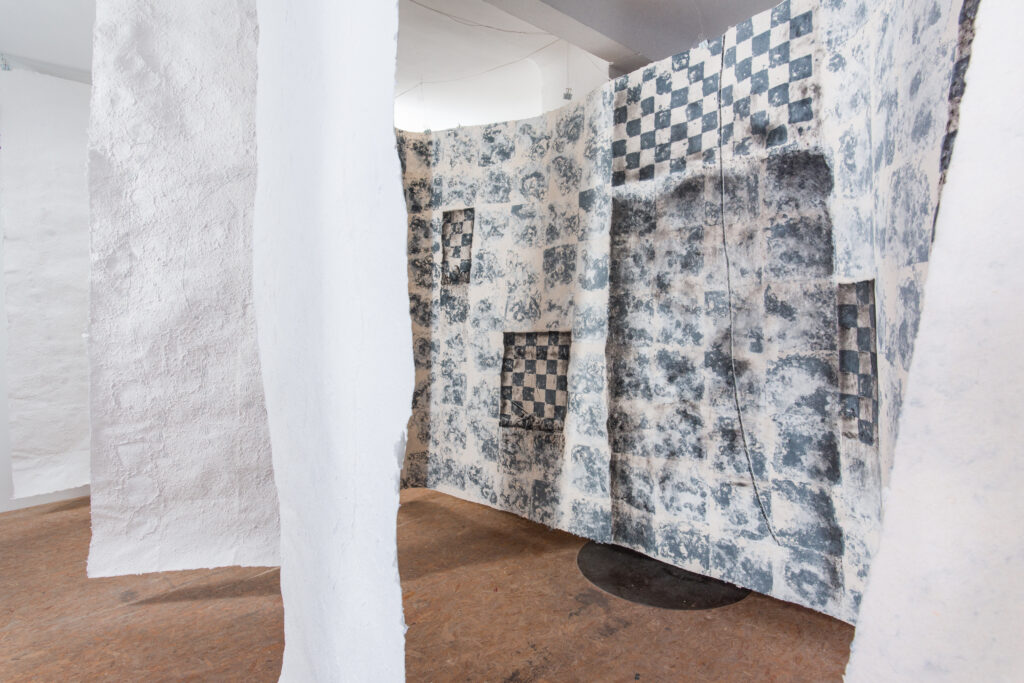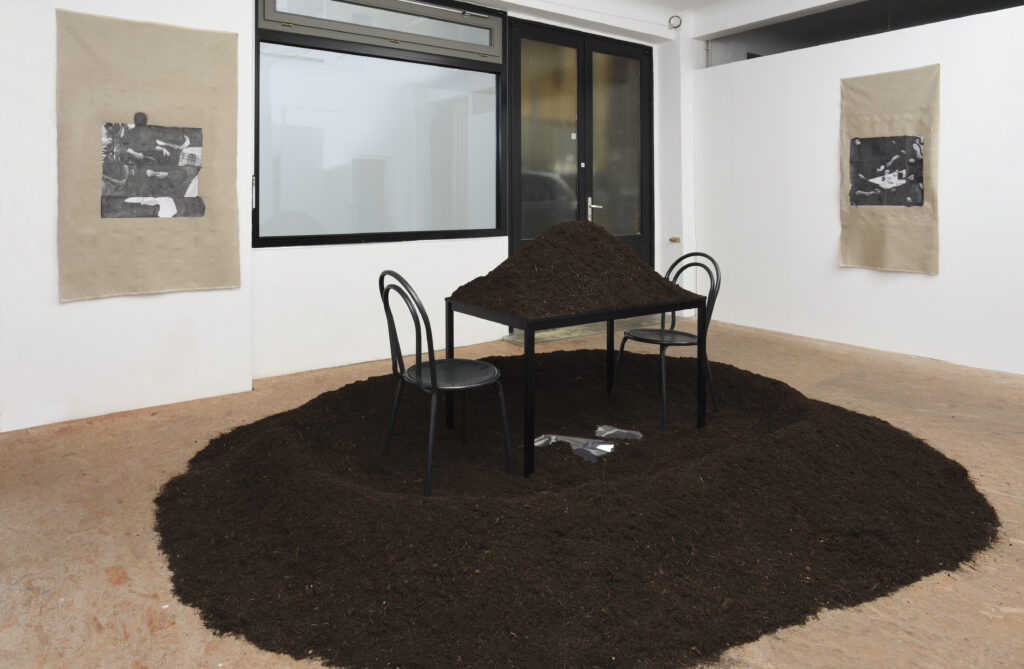Evangelia Ntouni, April 8 to May 6, 2022
On the Exhibition
Presence does not necessarily require physical attendance. Presence can also arise – and in a far more striking way – through absence. Evangelia Ntouni transforms the project space into a stage. At the center: a table and two chairs. Mother earth covers the table, thereby stripping it of its intended function. It could only be used if someone were to brush the soil aside. Earth is also piled around the ensemble on the floor, as if it had grown out of it, meant to protect it – or isolate it? The work evokes both distance and connection; the intense smell of earth fills the room. Collages hang on the walls: found photographs, repeatedly edited and alienated. Depicted: hands without bodies, gestures without history. Like ghosts, they surround the table, chairs, and soil. A dialogue develops between the works – a conversation about absence, and its power.
About the Artist
Memory is a central theme in Evangelia Ntouni’s artistic work – primarily, but not exclusively, her own memories. She attributes great value to the old, the existing, to objects that carry their own history. Evangelia Ntouni, born in 1991 in Athens, first studied monument preservation in Patras. In 2015, she came to Germany and spent a year in Aachen before moving to Stuttgart, where she studied at the State Academy of Fine Arts under Professors Susanne Windelen and Sofia Hultén. Evangelia Ntouni works primarily in installation – mainly using plaster, ceramics, and collages. Her works become embodiments, works that demand touch, always in relation to human actions: engaging with the past and the present.
Text: Ben Schieler
